Disclosure: This article contains affiliate links. We may earn a commission from purchases at no extra cost to you, which helps our travel content.
There's something magical about exploring coastal transitions by bicycle—the way ecosystems gradually shift as barrier island dunes give way to salt marshes, and eventually to the historic urban landscape. As someone who's spent a lifetime studying marine ecosystems, I find that cycling offers the perfect pace to truly observe these changes. When my research colleague invited me to join her weekend cycling adventure from Kiawah Island to Charleston last spring, I immediately rearranged my schedule. Having explored coastlines around the world, I was eager to experience this unique South Carolina coastal region that beautifully balances natural preservation with thoughtful development. What followed was a perfect weekend blend of wildlife encounters, historical discoveries, and culinary delights that reminded me why slow travel remains the most rewarding way to connect with a place.
Day 1: Kiawah Island's Natural Wonders
Our adventure began on Kiawah Island, where I arrived the evening before our departure to acclimate to the rhythm of coastal Carolina. I stayed at the Andell Inn, a boutique hotel that balances luxury with environmental consciousness—something I always appreciate as a marine conservationist.
Morning arrived with that distinctive coastal light that photographers chase, illuminating the salt marsh in golden hues. After adjusting my bike helmet and loading my daypack, I met my cycling companions at Kiawah's nature center for a guided morning bird walk before hitting the trails. Our naturalist pointed out nesting areas for endangered Piping Plovers, reminding me of similar conservation efforts I've documented in coastal Japan.
Kiawah's extensive trail network offers 30+ miles of paved pathways that wind through remarkably diverse habitats. We cycled alongside maritime forests where I spotted several alligators basking in the morning sun—a thrilling sight even for someone who studies marine creatures professionally! The island's commitment to preserving these ecosystems while allowing respectful human access represents the kind of sustainable tourism model I advocate for in my research.
Our afternoon route took us to Beachwalker Park at the island's western end, where we locked our bikes and explored the pristine beach. The intertidal zone here offers a magnificent classroom of marine biology—I couldn't help gathering my companions for an impromptu lesson on the ghost crabs and coquina clams we discovered. As we picnicked on the beach, a pod of dolphins appeared just offshore, demonstrating their unique strand feeding behavior where they herd fish onto the shoreline—a rare hunting technique observed in only a few dolphin populations worldwide.
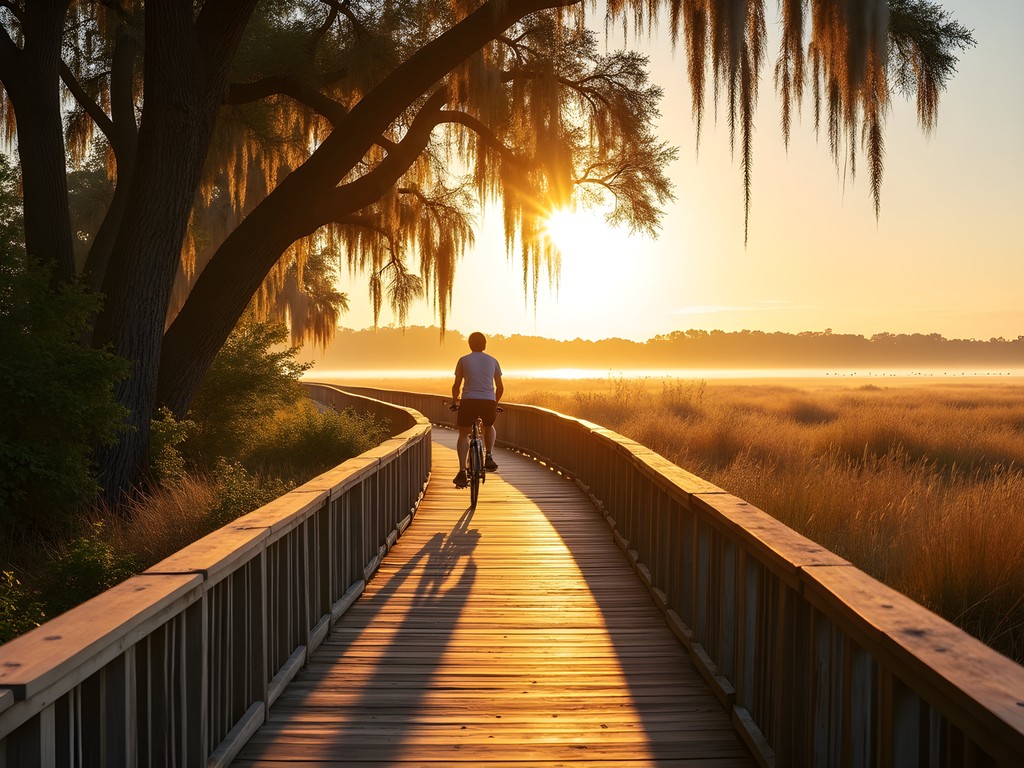
💡 Pro Tips
- Rent bikes on the mainland before arriving if staying short-term on Kiawah to avoid premium rental prices on the island
- The Kiawah Island Nature Center offers excellent guided wildlife tours that provide context even experienced naturalists will appreciate
- Beachwalker Park has limited parking but is easily accessible by bike from anywhere on the island
Day 2: Coastal Transition to Seabrook & Johns Islands
Our second day began with a farewell to Kiawah as we cycled north toward neighboring Seabrook Island. The transition between these barrier islands offers a fascinating study in different development approaches—Kiawah's careful preservation contrasted with Seabrook's more traditional resort layout. As we pedaled along Seabrook's palm-lined avenues, I noticed how even subtle differences in landscaping choices impact local wildlife populations.
After a refreshing morning ride, we crossed onto Johns Island via the Betsy Kerrison Parkway. This is where the landscape begins its gradual transformation from coastal playground to agricultural heartland. The traffic increased slightly here, making me grateful for my bike mirror that provides excellent rearview visibility without adding bulk to my handlebars.
Johns Island holds a special place in my heart for its remarkable Angel Oak, estimated to be 400-500 years old. We locked our bikes and spent an hour beneath its massive, twisting limbs that span more than 17,000 square feet. As someone who's witnessed ancient natural wonders worldwide, I can confidently say this living monument rivals many famous heritage sites.
For lunch, we stopped at the Stono Market & Tomato Shed Café, a farm-to-table gem where local shrimp and seasonal vegetables reminded us of the rich agricultural traditions that have sustained these sea islands for generations. The café owner shared stories of how changing coastal conditions have affected local farming practices—a poignant reminder of how climate shifts impact both marine and terrestrial food systems.
Our afternoon route took us through Lowcountry backroads where we passed historic churches, small farms, and roadside produce stands. The day's highlight came when we spotted a family of painted buntings—vibrantly colored birds that migrate to these coastal areas—feeding in a hedgerow beside a quiet country lane.
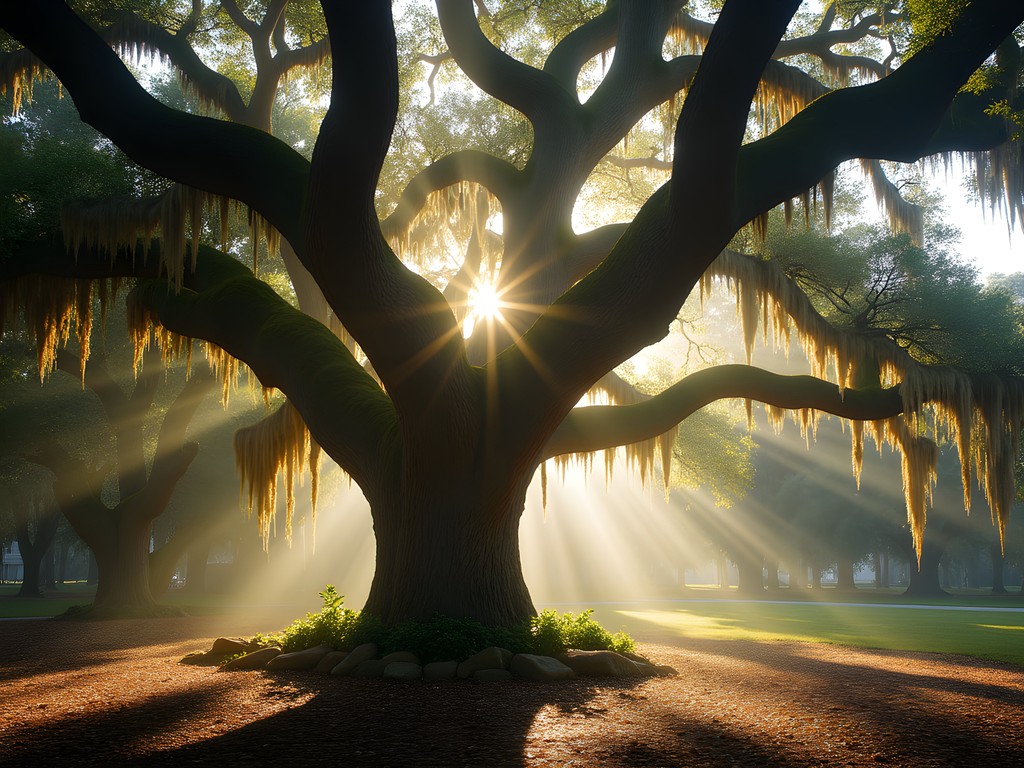
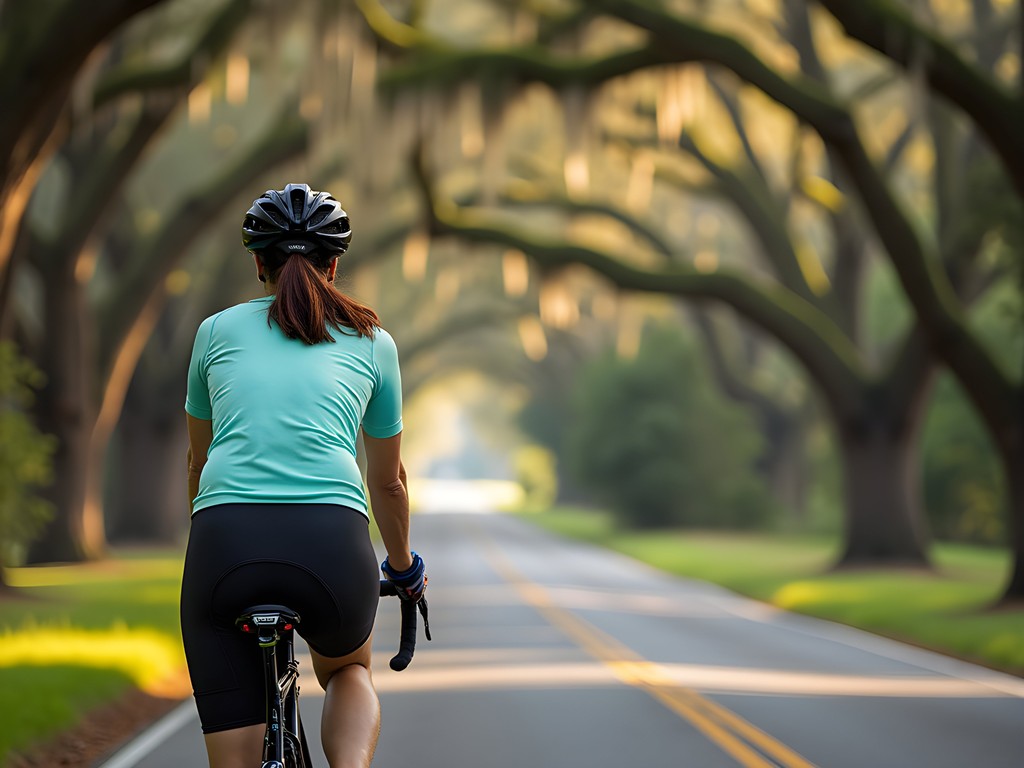
💡 Pro Tips
- The Betsy Kerrison Parkway has no dedicated bike lane, so ride single file and use caution during busier weekend periods
- Visit Angel Oak early in the day to avoid crowds and experience the tree in more contemplative quiet
- Bring cash for roadside produce stands on Johns Island—the strawberries in spring are exceptional
Day 3: Folly Beach to Historic Charleston
Our final day presented the most diverse ecological transitions as we made our way from Johns Island to Folly Beach before heading into Charleston proper. Crossing the Stono River onto James Island, we followed the James Island Connector to reach Folly Beach—a community with a distinctly laid-back surf culture that contrasts with Kiawah's more manicured atmosphere.
At Folly Beach County Park, we parked our bikes to explore the Morris Island Lighthouse viewpoint. As a marine biologist, I find eroding lighthouses particularly poignant—they stand as monuments to changing coastlines and rising seas. I shared with my companions how this lighthouse once stood on solid ground but now appears to rise directly from the ocean due to erosion and sea level changes.
After a quick breakfast at Lost Dog Café (a local institution with excellent coffee and even better people-watching), we continued our journey toward downtown Charleston. The route through James Island offers glimpses of salt marshes and tidal creeks where I spotted fiddler crabs performing their distinctive waving display—a behavior I've studied across different coastal ecosystems.
Crossing the Ashley River Bridge delivered that quintessential Charleston moment as the city's historic skyline came into view. We followed the peninsula's western edge before cutting across to East Bay Street. For anyone attempting this route, I highly recommend using a cycling GPS to navigate Charleston's historic district efficiently. The device proved invaluable for finding bike-friendly routes through the city's charming but sometimes confusing historic streets.
Our cycling journey culminated at Waterfront Park, where we celebrated with a group photo beneath the iconic Pineapple Fountain. The afternoon allowed for a well-earned exploration of Charleston on foot, where we wandered through the historic district and Charleston City Market. As someone who's lived in historic cities like Kyoto and Milan, I found Charleston's preservation efforts particularly impressive—a model for how coastal historic districts worldwide might adapt to changing environmental conditions while honoring their architectural heritage.
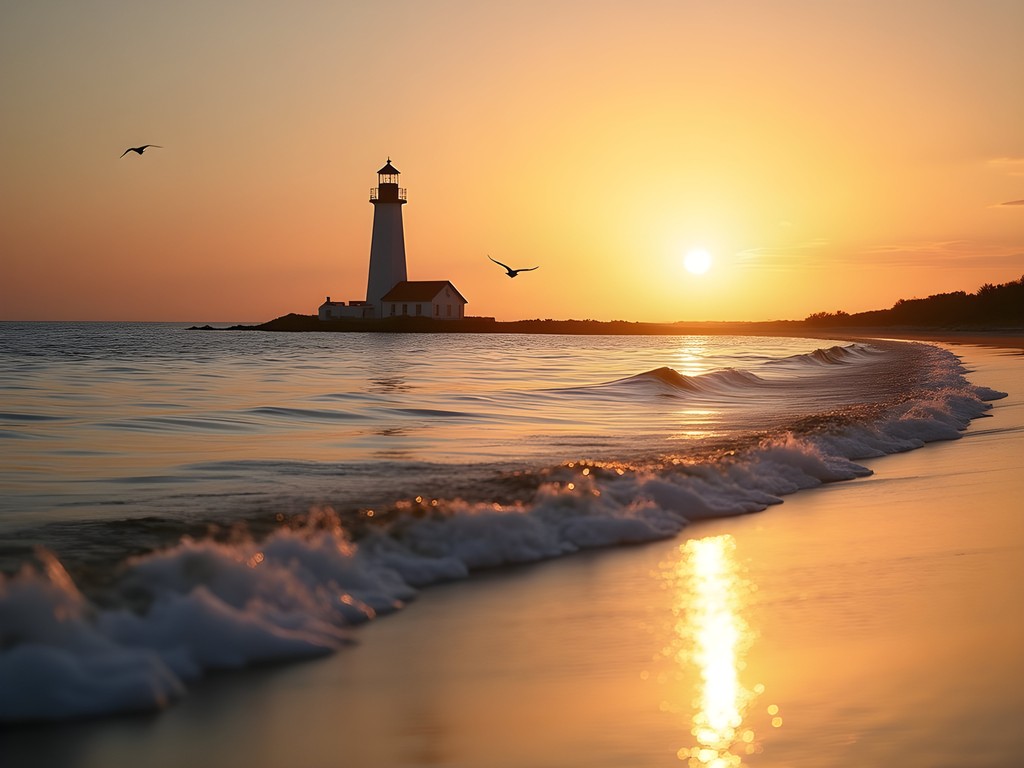
💡 Pro Tips
- The route from Folly Beach to downtown Charleston can be busy with traffic; consider using the James Island Connector early on weekend mornings when traffic is lighter
- Waterfront Park offers bike racks and water fountains for refilling bottles before exploring the historic district on foot
- Many Charleston historic homes offer discounted admission if you mention arriving by bicycle
Where Science Meets Adventure: Marine Discoveries Along the Route
As a marine biologist, coastal cycling adventures always become impromptu field research opportunities. This journey between Kiawah and Charleston offered numerous moments where I couldn't help but stop to investigate fascinating ecological phenomena.
The salt marshes we passed serve as critical nurseries for commercially important fish species and act as natural filtration systems—something I explained to my cycling companions when we observed juvenile fish darting through the shallows. These wetlands sequester carbon at rates exceeding tropical forests, making their preservation crucial for climate resilience.
At one memorable stop along the Kiawah River, we observed oyster reefs exposed during low tide. I demonstrated how to identify living oyster clusters and explained their remarkable filtration capabilities—a single oyster can filter up to 50 gallons of water daily! These living shorelines provide natural coastal protection against erosion and storm surge while supporting biodiversity.
For those interested in marine ecology, I recommend carrying a waterproof field guide during coastal cycling trips. This comprehensive guide has accompanied me on expeditions worldwide and helps identify species while explaining their ecological roles.
The journey also revealed concerning evidence of plastic pollution, even in seemingly pristine areas. During our beach breaks, we collected microplastics—a sobering reminder of why my research focuses on marine conservation. This cycling route offers a perfect opportunity to witness both the resilience and vulnerability of coastal ecosystems.
Perhaps most fascinating was observing the pluff mud that defines the Lowcountry's tidal areas. This distinctive gray-black sediment might appear unremarkable, but it teems with life and plays a crucial role in coastal carbon sequestration. When we stopped at an observation deck overlooking a salt marsh, I showed my companions how to spot the trails of various invertebrates across the mud surface—each pattern telling the story of a different creature's feeding strategy.
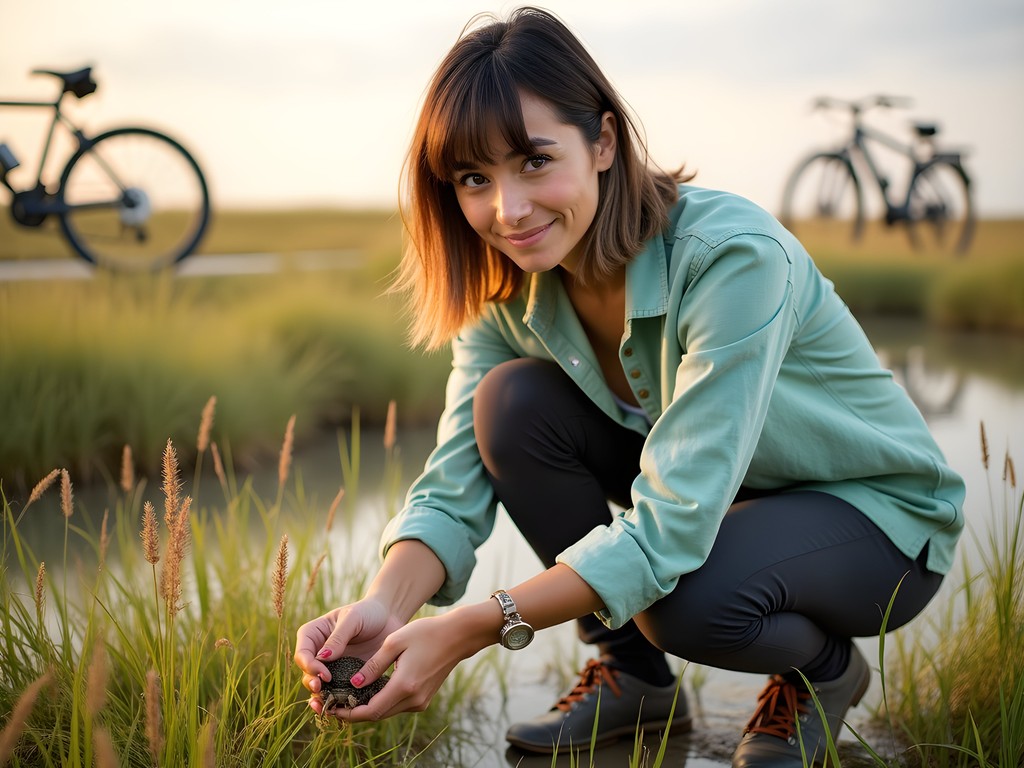
💡 Pro Tips
- Bring compact binoculars for wildlife spotting—8x42 magnification offers the best balance of power and stability while cycling
- Download the South Carolina Aquarium's Good Catch app to identify sustainable seafood options at local restaurants
- Low tide offers the best opportunity to observe intertidal ecosystems, so check tide charts when planning daily routes
Practical Planning: Logistics and Accommodations
Planning a multi-day cycling adventure requires balancing ambition with practicality. Our three-day route covered approximately 50 miles total, allowing ample time for exploration while remaining accessible to intermediate cyclists. We averaged 15-20 miles of cycling per day, with the final day into Charleston being the longest stretch.
For accommodations, we chose a strategic progression that matched our journey's flow. Our first night on Kiawah Island at the Andell Inn provided convenient access to the island's extensive trail network. On the second night, we stayed at a charming bed and breakfast on Johns Island called Eden Wind Farm, where our hosts welcomed cyclists with secure bike storage and hearty breakfasts perfectly calibrated for active days.
Our final night in Charleston at the Vendue Hotel placed us within easy walking distance of the historic district's attractions after completing our ride. The hotel offers secure bike storage and even provides complimentary cleaning supplies for dusty cycles—a thoughtful touch I've rarely encountered elsewhere.
Regarding equipment, this route doesn't demand specialized cycling gear, but comfort is essential. I relied on my padded cycling shorts for all-day comfort without bulk. The weather in spring can be unpredictable, so layering is crucial—I started most mornings with a light jacket that easily packed away as temperatures rose.
For those planning to replicate this journey, I recommend arranging bike rentals through Holy Spokes in Charleston. They offer multi-day rentals of high-quality hybrid bikes perfect for this mixed-terrain route and can arrange drop-off at Kiawah Island for an additional fee. Alternatively, if bringing your own bike, The Vendue Hotel can store your travel case while you complete the journey.
Water refill stations are available at beaches and parks along the route, but certain stretches on Johns Island have limited services. I carried two large water bottles plus a hydration reservoir in my daypack to ensure adequate hydration during spring's sometimes surprising heat.
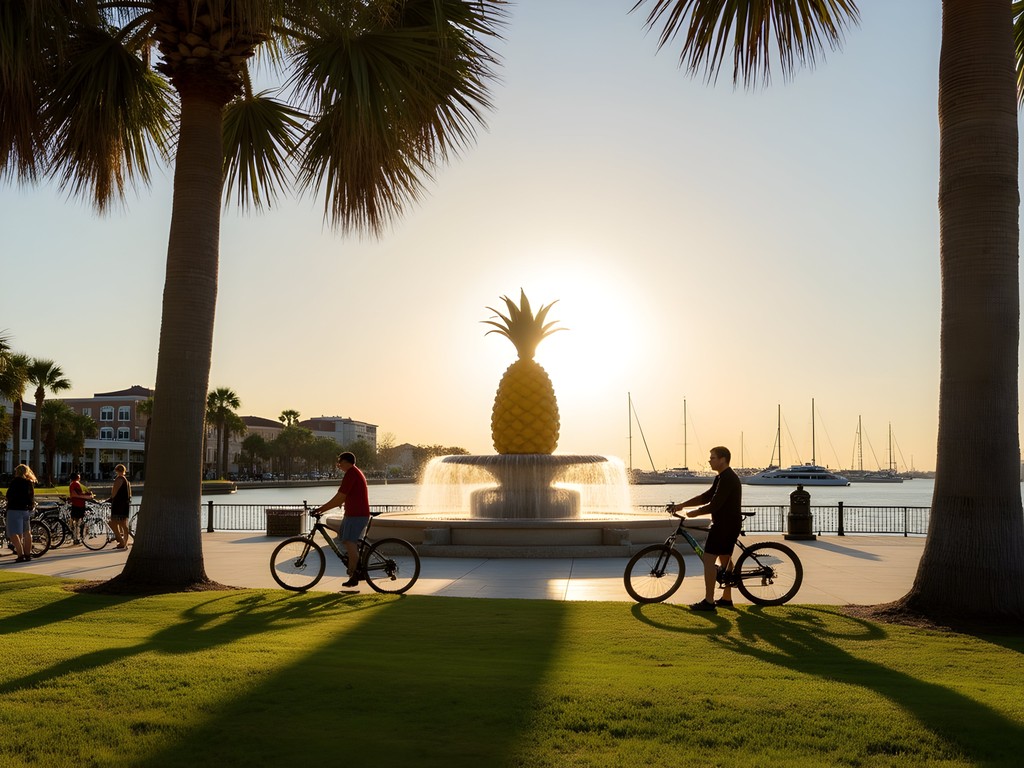
💡 Pro Tips
- Book accommodations well in advance for spring weekends when this route is at its most popular and pleasant
- Consider a one-way car rental for return transportation if you're not cycling back to Kiawah
- Most restaurants along the route are casual and welcome cyclists, but Charleston's upscale establishments may require changing from cycling attire
Final Thoughts
This three-day cycling journey from Kiawah Island to Charleston offers a perfect blend of natural immersion and cultural exploration that satisfies both the scientist and adventurer within me. The route reveals how coastal ecosystems gradually transition and interconnect—a living laboratory of environmental science accessible at a bicycle's contemplative pace. What makes this adventure particularly special is its accessibility; you don't need professional cycling equipment or exceptional fitness to experience these remarkable transitions. Whether you're a couple seeking an active romantic getaway or friends desiring meaningful connection with a unique landscape, this journey delivers rich rewards for moderate effort. As climate change continues altering coastal regions worldwide, experiences that foster understanding of these dynamic ecosystems become increasingly valuable. I invite you to discover your own moments of wonder along this route, where the journey between destinations reveals as much as the destinations themselves.
✨ Key Takeaways
- This 50-mile route is accessible to intermediate cyclists and can be comfortably completed in three days
- Spring offers ideal weather conditions with wildflowers blooming and comfortable temperatures for cycling
- The route showcases remarkable ecological transitions from barrier islands to historic urban landscapes
- Accommodations in three different locations (Kiawah, Johns Island, and Charleston) provide distinct experiences of Lowcountry culture
📋 Practical Information
Best Time to Visit
Mid-March to early May for ideal temperatures and spring blooms
Budget Estimate
$200-300/day including accommodations, food, and bike rentals
Recommended Duration
3 days minimum, 4-5 days ideal for deeper exploration
Difficulty Level
Intermediate - Suitable For Regular Cyclists With Moderate Fitness

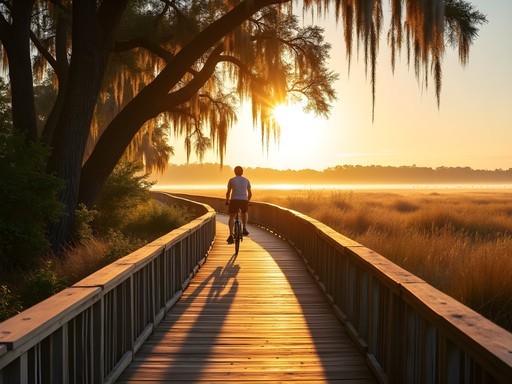
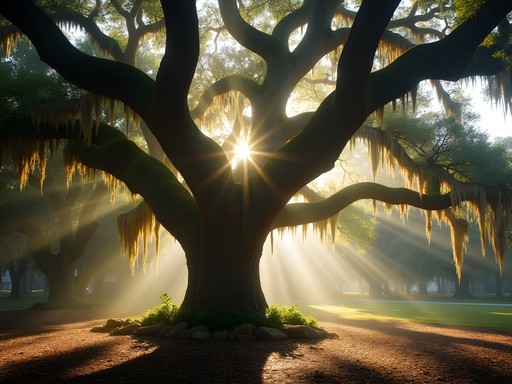
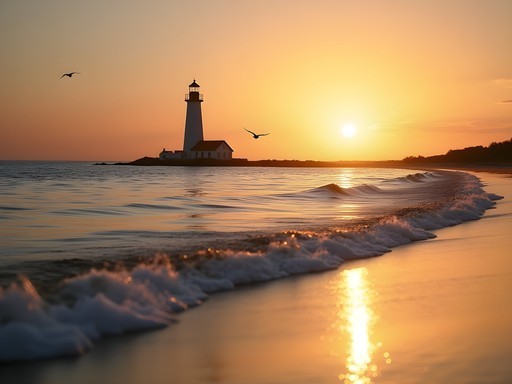












Comments
globenomad
This looks perfect for my first multi-day cycling trip! How difficult would you rate the route for someone who's in decent shape but not an experienced cyclist? And are there places to stop for water/snacks along the way?
stargal5700
Not Nicole, but I'd say it's moderate difficulty. Some stretches on Day 2 are more challenging with few services. The Freshfields Village market between Kiawah and Seabrook is great for stocking up. There are convenience stores on Johns Island too. Just plan your water stops!
Nicole Burns
Agree with stargal5700! It's definitely doable for someone in decent shape. The terrain is mostly flat, but some days are longer than others. Day 3 has more traffic as you approach Charleston, so just be prepared for that. I'd recommend starting early to avoid afternoon heat!
globenomad
Thanks both! This is super helpful. Booking my trip for October now!
Bella Johansson
What a wonderful route you've mapped out, Nicole! My husband and I did something similar last fall, though we took 5 days instead of 3 because we're not as spry as we used to be! 😂 We found the Angel Oak on Johns Island to be worth the detour - that 400-year-old tree is humbling. One tip for others: we packed our waterproof panniers which saved our gear during an unexpected afternoon shower. The seafood at Bowens Island Restaurant was the highlight of our culinary adventures - don't miss their local oysters if you're there during oyster season!
globenomad
Thanks for the Angel Oak tip, Bella! Was it easy to find secure bike parking there?
Bella Johansson
There are bike racks near the gift shop area, but we brought a cable lock just to be safe. It's a popular spot, so better to be cautious with your gear!
stargal5700
Just did this route last month! That section on Day 2 between Seabrook and Johns Island can get pretty hot with limited shade, so definitely pack extra water. We saw a family of dolphins in the inlet near Bohicket Marina during our lunch break - absolutely magical! The seafood at Lokal on Johns Island was the perfect reward after a long day's ride. Nicole, did you have any wildlife encounters during your trip?
Nicole Burns
Yes! We saw so many birds in the marshes - egrets, herons, and even a wood stork. Also spotted some alligators sunning themselves near the freshwater ponds on Kiawah. The dolphin strand feeding near the north end of the island was incredible to witness!
coolfan
This looks amazing! Been wanting to do a multi-day cycling trip forever. Those marsh photos are gorgeous!
Nicole Burns
Thanks so much! The marshes between Johns Island and Folly Beach were honestly the highlight for me. The light there around 5pm is magical!
coolfan
Did you rent bikes there or bring your own? Planning a trip for October and trying to figure out logistics.
Nicole Burns
We rented from Kiawah Island Bike Rentals - they have great hybrid bikes perfect for mixed terrain. Just book in advance for October, it's still pretty busy then!
Adam Nichols
This route perfectly captures the ecological transition zones that make coastal Carolina so fascinating. I cycled a portion of this last October and was struck by how the vegetation changes as you move inland. For those interested in the science behind these transitions, I'd recommend stopping at the Coastal Research Center on Johns Island - they often have free exhibits open to the public. The juxtaposition of natural coastal systems with Charleston's historic architecture provides a unique lens on how human settlement patterns have been shaped by these environments. Nicole, your Day 2 route suggestions helped me discover some hidden marshland viewpoints I would have otherwise missed.
backpackvibes
Thanks for the tip about the Research Center! Adding that to my itinerary for next time.
waveking
Pro tip: bring extra water for the Day 2 stretch. Limited refill points there.
nomadadventurer
Love this route! Planning to do it with my family next spring. How bike-friendly would you say it is for kids (12 & 14)? Also, did you rent bikes or bring your own? Any rental recommendations in Kiawah?
Nicole Burns
This route is great for teens! Just be careful on the section between Seabrook and Johns Island - there's about 2 miles where the shoulder is narrow. Kiawah has several good rental options - I used Kiawah Island Bike Rentals and they delivered right to our accommodation. They have great youth bikes too!
sunsettime
We did this with our 13-year-old and she loved it! The wildlife spotting keeps kids engaged - we saw dolphins, herons and even an alligator (from a safe distance). Bring binoculars!
winterguide
Those photos of the marsh boardwalk are stunning! Can't wait to see this in person someday!
Savannah Torres
We just completed this trip with our kids (10 and 12) last month and it was perfect for a family adventure! We modified the route slightly to include more breaks, and the kids absolutely loved spotting wildlife in the marshes. The transition from natural landscapes to the historic streets of Charleston was such a great educational experience. We used our bike trailer for extra supplies which was a lifesaver. Nicole, your marine discoveries section really enhanced our journey - we turned it into a scavenger hunt for the kids to spot different species!
Nicole Burns
I love the scavenger hunt idea, Savannah! So glad your family enjoyed the trip. Kids often notice wildlife details that we adults miss!
backpackvibes
Did a similar route last year but spread it over 4 days instead of 3. Those salt marshes between Kiawah and Johns Island are absolutely breathtaking at sunset! We spent extra time on Folly Beach which was totally worth it. The seafood at Bowens Island Restaurant was the perfect reward after a day of cycling. Definitely recommend taking your time on this journey!
Venture X
Premium card with 2X miles, $300 travel credit, Priority Pass